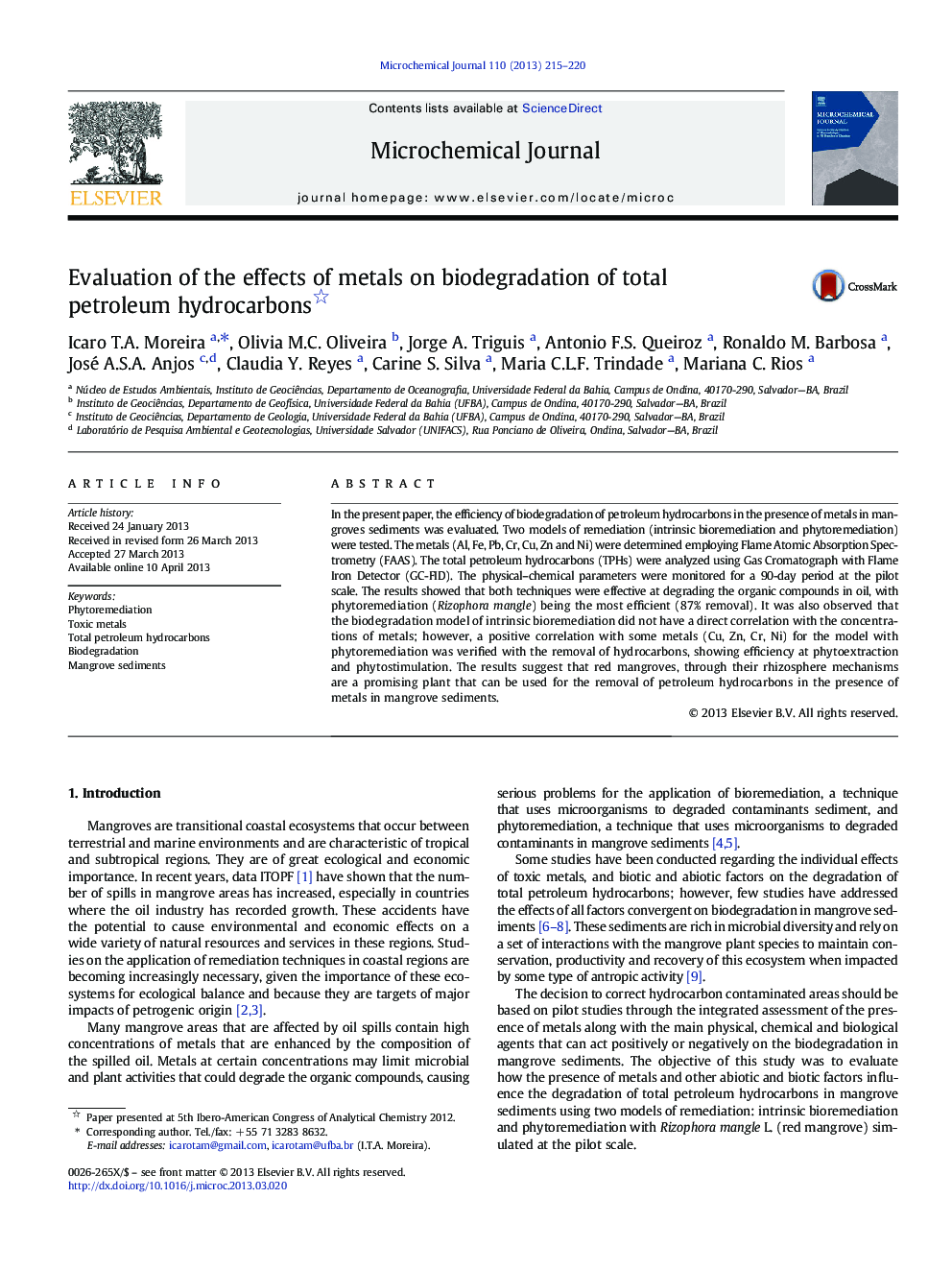| Article ID | Journal | Published Year | Pages | File Type |
|---|---|---|---|---|
| 7643664 | Microchemical Journal | 2013 | 6 Pages |
Abstract
In the present paper, the efficiency of biodegradation of petroleum hydrocarbons in the presence of metals in mangroves sediments was evaluated. Two models of remediation (intrinsic bioremediation and phytoremediation) were tested. The metals (Al, Fe, Pb, Cr, Cu, Zn and Ni) were determined employing Flame Atomic Absorption Spectrometry (FAAS). The total petroleum hydrocarbons (TPHs) were analyzed using Gas Cromatograph with Flame Iron Detector (GC-FID). The physical-chemical parameters were monitored for a 90-day period at the pilot scale. The results showed that both techniques were effective at degrading the organic compounds in oil, with phytoremediation (Rizophora mangle) being the most efficient (87% removal). It was also observed that the biodegradation model of intrinsic bioremediation did not have a direct correlation with the concentrations of metals; however, a positive correlation with some metals (Cu, Zn, Cr, Ni) for the model with phytoremediation was verified with the removal of hydrocarbons, showing efficiency at phytoextraction and phytostimulation. The results suggest that red mangroves, through their rhizosphere mechanisms are a promising plant that can be used for the removal of petroleum hydrocarbons in the presence of metals in mangrove sediments.
Related Topics
Physical Sciences and Engineering
Chemistry
Analytical Chemistry
Authors
Icaro T.A. Moreira, Olivia M.C. Oliveira, Jorge A. Triguis, Antonio F.S. Queiroz, Ronaldo M. Barbosa, José A.S.A. Anjos, Claudia Y. Reyes, Carine S. Silva, Maria C.L.F. Trindade, Mariana C. Rios,
